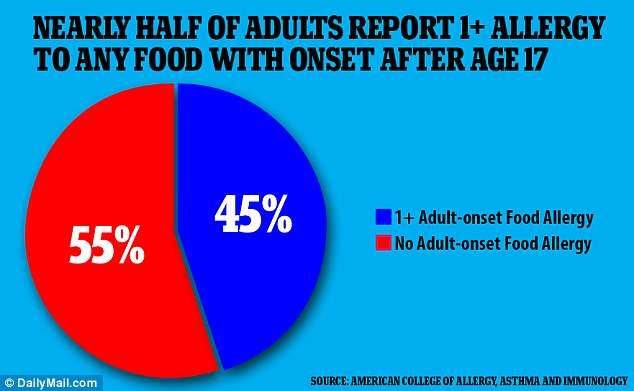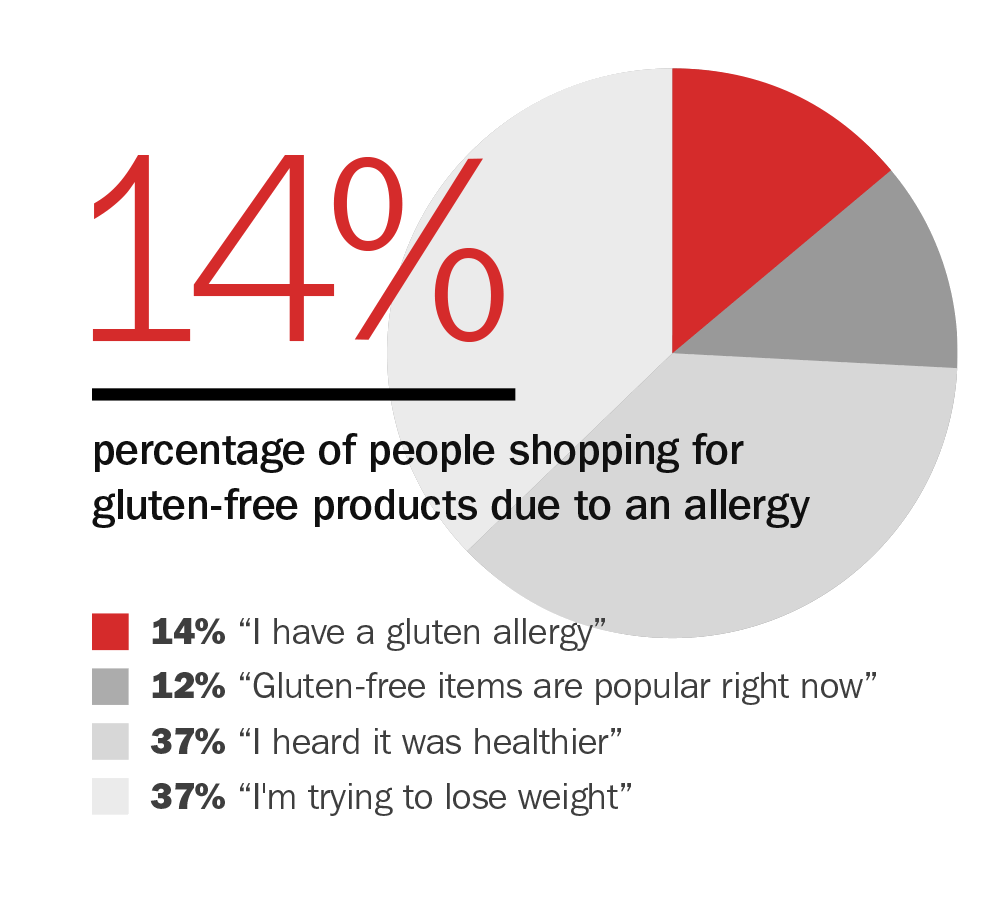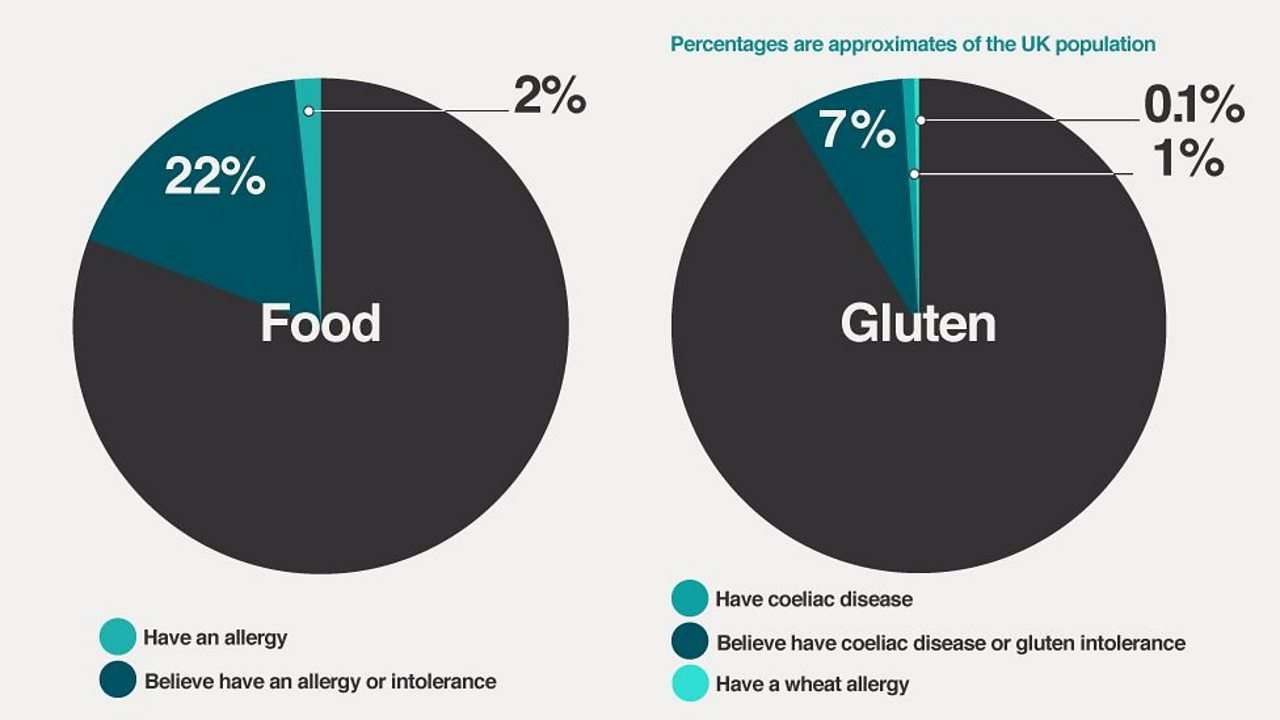Milk Allergy And Lactose Intolerance Are Not The Same Thing
The triggers and symptoms may be similar usually abdominal pain and diarrhea but the cause is totally different. A milk allergy is the result of an overactive immune system that targets certain dairy proteins, while an intolerance develops due to the absence of a necessary digestive enzyme, lactase, to help break down milk molecules in the gut.
Why does it matter? While a true milk allergy can be deadly, an intolerance can be addressed with an over-the-counter supplement, such as Lactaid. If youre bloating from dairy, a doctor can help you figure out if you should avoid it altogether, or take a trip to the local pharmacy. This is all we do throughout the world as allergists, said Bassett. We really sleuth, and do a lot of detective work to try and identify the proximate cause.
However Along With Progress Come More Questions And Challenges:
- A cellular culprit:Recent research from BRI uncovered a type of cell believed to drive all allergies, which means they may be more connected than we think. This breakthrough is a big deal for people with all types of allergies, and will help support research on better methods for diagnosis and treatment worldwide.
- How you get them: Scientists havent come to a consensus on the extent to which allergies are caused by environmental or genetic factors. In particular, we dont yet understand the role of environmental factors in triggering allergic reactions, especially to food. And were not sure what your sisters allergy to peanuts might mean for you.
- Where you live: Data from a 2010 study revealed varying degrees of food allergies between a group of Western countries, with the US, Germany, Italy, and Norway having the highest sensitivity and Iceland, Spain, France, and the UK with the lowest. However, these allergies werent clearly linked to different diets, so the connections remain a mystery.
- The complete picture: Many countries arent collecting data just yet. This means that for many people around the world, information on allergies isnt that easy to find, and certainly not in one central place. It also means that our global estimates are based on limited research samples, which may not paint a complete picture.
How Common Are Food Allergies Really
Food allergies are a widespread problem. However, while many adults in the United States are convinced that certain food items will cause them to have an allergic reaction, a new study reports that their fears are likely unfounded.
According to recent studies, the prevalence of food allergies has been increasing.
The Food and Drug Administration name eight common allergenic foods recognized by law: milk, eggs, fish, shellfish, tree nuts , peanuts, wheat, and soybean.
The FDA have estimated that these foods and their derivates are responsible for around 90 percent of all allergic reactions.
These can range from uncomfortable though not usually dangerous symptoms, such as itchy skin and diarrhea, to a potentially life-threatening reaction called anaphylaxis.
In anaphylaxis, the human body overreacts to allergenic substances. It causes extreme symptoms in different parts of the body, all at the same time. A person who is experiencing anaphylaxis always requires immediate medical attention.
However, although millions of people do live with food allergies, many more mistakenly believe that they have an allergy. In reality, these people are unlikely to come to any harm.
This is the conclusion of a recent study conducted by researchers from Ann & Robert H. Lurie Childrens Hospital of Chicago and Northwestern University in Evanston, both in Illinois.
Recommended Reading: When To Skip Allergy Shot
Q: How Many People Have Food Allergies In Canada
Food Allergy Canada estimates that roughly three million Canadians have a food allergy thats about 7.5 percent of Canadas population. However, that figure doesnt account for those family members and caregivers of people with such allergies who are also impacted.
Nabati Foods takes pride in creating products that are free of the most common allergens, meaning that our products can accommodate almost all dietary restrictions. We believe that food should bring people together, and thats exactly what we are trying to accomplish with our products.
What Causes An Allergy

An allergy is caused by the immune system fighting substances in the environment that it should see as harmless, known as allergens.
These innocent substances become targets, leading to allergic reactions.
Symptoms range from skin redness, hives and swelling to – in the most severe cases – vomiting, diarrhoea, difficulty breathing and anaphylactic shock.
Some of the most common foods for children to be allergic to are:
- milk
- tree nuts
- sesame
- shellfish
Recommended Reading: How Long Does It Take Allergy Medicine To Kick In
Q Which Food Allergies Tend To Occur In Childhood Later In Life
A. Any allergy can appear in childhood, but most common are cows milk, wheat, eggs and soy.
A child may outgrow an allergy, particularly cows milk, Gardner says. But generally, if theyre still reacting to a food at age 5, theyre less likely to outgrow it.
Other top allergies may arise in adulthood. The response is very individual, and we have no way to predict when an allergy may occur, Gardner says. Generally, allergies to peanuts, tree nuts, fish or shellfish are lifelong.
Food Allergies In Children
No parent wants to see their child suffer. Since fatal and near-fatal food allergy reactions can occur at school or other places outside the home, parents of a child with food allergies need to make sure that their childs school has a written emergency action plan. The plan should provide instructions on preventing, recognizing and managing food allergies and should be available in the school and during activities such as sporting events and field trips. If your child has been prescribed an auto-injector, be sure that you and those responsible for supervising your child understand how to use it.
In November 2013, President Barack Obama signed into law the School Access to Emergency Epinephrine Act , which encourages states to adopt laws requiring schools to have epinephrine auto-injectors on hand. As of late 2014, dozens of states had passed laws that either require schools to have a supply of epinephrine auto-injectors for general use or allow school districts the option of providing a supply of epinephrine. Many of these laws are new, and it is uncertain how well they are being implemented. As a result, ACAAI still recommends that providers caring for food-allergic children in states with such laws maintain at least two units of epinephrine per allergic child attending the school.
Read Also: Is Coconut Oil Considered A Nut Allergy
How Common Is Insect Allergy
People who have insect allergies are often allergic to bee, wasp, and ant stings. Cockroaches and dust mites may also cause nasal or skin allergy symptoms.
- Insect sting allergies affect 5% of the population.15
- As many as 100 deaths occur each year in the United States due to insect sting anaphylaxis.16
Medical Review: February 2018, updated April 2022 by Mitchell Grayson, MD
References
1. American College of Allergy, Asthma, and Immunology. . Allergy Facts.
2. Clark, S., Espinola, J., Rudders, S. A., Banerji, A., & Camargo, C. A. . Frequency of US Emergency Department Visits for Food-Related Acute Allergic Reactions. Journal of Allergy and Clinical Immunology, 127, 682683.
3. Wood, R. A., Camargo, C. A., Lieberman, P., Sampson, H. A., Schwartz, L. B., Zitt, M., Collins, C., Tringale, M., Wilkinson, M., Boyle, J., & Simons, F. E. R. . Anaphylaxis in America: the Prevalence and Characteristics of Anaphylaxis in the United States. The Journal of Allergy and Clinical Immunology, 133, 461467.
4. Turner, P. J., Jerschow, E., Umasunthar, T., Lin, R., Campbell, D. E., & Boyle, R. J. . Fatal Anaphylaxis: Mortality Rate and Risk Factors. The Journal of Allergy and Clinical Immunology: In Practice, 5, 11691178.
Q Do Certain Food Allergies Accompany Other Allergies
A. Yes. People who are sensitive to certain airborne allergens may develop some food allergies, This is known as oral allergy syndrome.
Thus, if youre susceptible to ragweed pollen, during seasons where ragweed pollen is high the person may experience a reaction with the ingestion of one of the following: cantaloupe, honeydew, watermelon and bananas.
Foods associated with birch tree pollen allergy include: apples, apricots, cherries, peaches, pears, plums, kiwi, carrots, celery, parsley, almonds and hazelnuts.
You May Like: Does Allergy Medicine Help Cold Symptoms
What Are The Risks And Symptoms Of Food Allergies
Allergic reactions can change very quickly from mild to severe — in the worst cases causing anaphylactic shock or death. Because an allergic reaction can happen fast and without warning, watch for the following symptomsFootnote 1:
- Skin:
- hives, swelling , itching, warmth, redness
- Respiratory:
- coughing, wheezing, shortness of breath, chest pain or tightness, throat tightness, hoarse voice, nasal congestion or hay fever-like symptoms , trouble swallowing
- Gastrointestinal:
- nausea, pain or cramps, vomiting, diarrhea
- Cardiovascular:
- paler than normal skin colour/blue skin colour, weak pulse, dizziness or light headedness, loss of consciousness, shock
- Other:
- Tree nuts
- Sesame seeds
- Mustard
How Is A Food Allergy Diagnosed
Your doctor will look for any other conditions that could be causing symptoms. For example, if you have diarrhea after drinking milk, the doctor may check to see if lactose intolerance could be causing the problem instead of a food allergy. Another condition that may mimic food allergy symptoms is celiac disease. People with celiac disease are not able to tolerate gluten, a protein found in wheat and certain other grains.
If your doctor thinks you have a food allergy, you’ll probably see an . The allergist will ask you questions again and do a physical exam . They’ll probably also run some tests to help diagnose the problem.
The most common kind of allergy test is a skin test. A doctor or nurse will scratch the skin with a tiny bit of the extract, then wait a few minutes to see if there’s a reaction. Doctors may also do other tests, including a blood test. Blood tests show if there are antibodies to a particular food in the person’s blood.
If the test results are unclear, the allergist may do a food challenge:
- During this test, a person slowly gets increasing amounts of the potential food allergen to eat while being watched for symptoms by the doctor. The test must be done in an allergist’s office or hospital with access to immediate medical care and medicines because a life-threatening reaction could happen.
Food challenge tests are also done to see if people have outgrown an allergy.
Read Also: Can Food Allergies Cause Stomach Bloating
Why The World Is Becoming More Allergic To Food
Around the world, children are far more likely than ever before to develop food allergies.
Inquiries into the deaths of British teenagers after eating buttermilk, sesame and peanut have highlighted the sometimes tragic consequences. Last year, a six-year-old girl in Western Australia died as the result of a dairy allergy.
The rise in allergies in recent decades has been particularly noticeable in the West. Food allergy now affects about 7% of children in the UK and 9% of those in Australia, for example. Across Europe, 2% of adults have food allergies.
Life-threatening reactions can be prompted even by traces of the trigger foods, meaning patients and families live with fear and anxiety. The dietary restrictions which follow can become a burden to social and family lives.
While we can’t say for sure why allergy rates are increasing, researchers around the world are working hard to find ways to combat this phenomenon.
Q: What Challenges Have You Faced And How Have You Overcome Them

The biggest challenge Nabati Foods has encountered recently is keeping pace with demand. We are addressing a wide gap in the market by doing what others are not and demand has spiked rapidly in response.
Weve worked hard to build solid brand recognition and brand loyalty with corporate partners and individual consumers, and weve recently opened a new manufacturing facility that increases our capacity sevenfold. The next step throughout 2021 and beyond is to expand our geographic footprint via our distribution and manufacturing.
Im proud to report that Nabati Foods is working with global export leaders and has successfully entered the Asian market. We are now working on entering the European market ahead of schedule while expanding our offerings in the US. Nabati Foods is focused on scaling up in a smart, efficient way whilst always being careful to adhere to our strict quality standards.
All our products are kosher, vegan, egg-free, dairy-free, gluten-free, and made without GMOs or refined sugar. We believe food should bring people together, regardless of dietary restrictions.
Read Also: Do Allergy Shots Make You Gain Weight
The Asthma Statistics Indicate That Over 24 Million Americans Suffer From This Condition
It affects 7.7% of adults and 7.5% of children. While asthma is more prevalent in males than females in childhood, thats not the case for adults when it is more common in females than males. When it comes to ethnicities, allergy statistics uncover that asthma is more likely to happen in Blacks, American Indians, and Alaskan Natives.
%30% Of The Adult Population Struggles With Allergic Rhinitis
Allergic rhinitis or hay fever is the most common allergy that affects 10%30% of the adult population and 40% of children worldwide. Its symptoms can be seasonal and perennial. When it comes to seasonal symptoms, they can appear in spring, summer, and at the beginning of fall.
On the other hand, people with perennial symptoms will most likely experience its symptoms during the whole year.
Also Check: How To Treat An Allergy Headache
The Role Of The Microbiome Is Mysterious But Major
Scientists are confident that if the microbiome the unique make-up of microorganisms living on the skin and inside the body has a lot to do with developing food allergies. And counterintuitively, kids who are exposed to more germs early on are actually less likely to develop lifelong food allergies. Protective factors include growing up with older siblings, or even with pets, researchers say.
In The Us Medicine Allergies Are The Deadliest
Allergy statistics indicate some of the most common allergy-provoking drugs include aspirin and ibuprofen, as well as insulin and anti-seizure drugs.
Also, around 5% of Americans have insect sting allergies. Each year, 90 out of 100 anaphylactic deaths occur after an insect sting or bite, as noted in the ACAAI data for 2018. In half of these cases, deaths are preceded by a heavy allergic reaction in the past.
Generally, people are allergic to bee or wasp stings, poisonous ant bites, and cockroaches.
Don’t Miss: When Do Babies Outgrow Dairy Allergy
Prevalence And Severity Of Food Allergies Among Us Adults
1Institute for Public Health and Medicine, Northwestern University Feinberg School of Medicine, Chicago, Illinois
2Department of Pediatrics, Northwestern University Feinberg School of Medicine, Chicago, Illinois
3Mary Ann & J. Milburn Smith Child Health Research, Outreach, and Advocacy Center, Ann & Robert H. Lurie Childrens Hospital, Chicago, Illinois
4Department of Medicine, Northwestern University Feinberg School of Medicine, Chicago, Illinois
Research Related To The Prevalence Of Food Allergies And Intolerances
Health Canada and AllerGen NCE supported the SPAACE to SPAACE study, a research initiative led by the University of Calgary and the University of Waterloo. This large Canadian survey, launched in 2016, provides a more recent estimate of the prevalence of common food allergies in Canada as well as a better understanding of the attitudes and behaviors of those living with these medical conditions. It is also the first study to look at temporal trends in overall food allergy prevalence in Canada by comparing these results to previous data collected in 2010.
The 2016 survey included 5,874 households, representing 15,322 individuals, including new Canadians, individuals of Indigenous identity, and members of lower-income households. In addition to estimating the number of Canadians affected by food allergy in general, the study looked at those that are largely responsible for the majority of severe anaphylactic reactions: peanut, tree nut, shellfish, fish, milk, egg, wheat, sesame and soy. Food allergy was defined as perceived or probable .
Read Also: How To Fix Allergy Fatigue
Are Food Allergies Outgrown
- Milk, egg, wheat, and soy allergies are often outgrown. Most people do not outgrow peanut, tree nut, fish, and shellfish allergies.11
Medical Review: September 2017, updated April 2022 by Gurjit K. Khurana Hershey, MD
References
Food Allergy Topics
How Does A Food Allergy Differ From A Food Intolerance

A food allergy involves the immune system and symptoms can be life-threatening. A food intolerance is the inability to digest or absorb certain foods. For example, someone with lactose intolerance doesnt have enough of the enzyme lactase to break down the sugar in dairy products. The symptoms of food intolerance affect the gastrointestinal tract and can cause discomfort but are generally not life-threatening.
Read Also: How Are Food Allergies Caused

